
After more runs with my “marathon capable” Nike Lunar racer, here is the 2nd installment to my review of this fantastic pair of running shoes. I can’t deny that my following runs after my first with this pair were quite abrasively painful, particularly given my gait change to this new shoe, so I needed a longer resting time and rotating between shoes for the skin abrasions on the side of the big toe and the last toe to heal before giving the shoes another fair go.
I brought the shoes out for more short-middle distance long runs to test the cushioning, together with some track 400m speedwork to test the responsiveness and feedback.
With each passing run, I am glad to say that the shoe is more accustomed to fit my foot now and I am starting to see the potential of this pair of racers. Considering me myself being a long time Nike skeptic for their running shoes, this racer had quite a formidable task to proof itself worthy into my running arsenal mainly dominated by Asics, Mizuno and New Balance shoes for most of my active running period.
I will be breaking down my thoughts for this pair of shoes over few following areas. Though the shoe is not perfect, it’s combination of many performance factors coupled with it’s weight advantages which makes it really impressive for it’s class. Looks like we have a winner here.
Mid sole
The mid sole is shaped like an accordion, and acts like one too- returning energy after each running stride. It is also blessed with a rather broad waffle base which acts like a piston to push off the foot on each strike. Though this really made the mid sole stick out, that didn’t not bother me much at all. The shoes have a bouncy feel when you are jumping around stationary, almost too cushiony. The shoe still maintains this light bounciness on light jog, however, it turned firm and responsive when you start to pick up speed. Just like a performance car on sports mode, you can simply just feel the shoe stiffen up in response when running in them, and that really give me some good support and protection to your legs as a whole and a good stable and a responsive take-off when you are up for it. It’s amazing for a sole so minimal.
Upper
The body of the shoe is wrapped in a modified synthetic rubber compound we know as Nike Free, allowing for an anatomical fit over a gradual break in. This fit also allows the muscles in the foot to gain strength by providing less constriction, it will be advised to gradually break into the shoe rather than immediately running long distances as to prevent muscle cramps and other discomforts. This material also gives the shoe a rather waterproof amphibious feel typical in those worn by tri-athletes let be steeple chase runners themselves. Ventilation is adequate with a breathable mesh construction and my feet was relatively dry after a 10km run in plain cotton non-neoprene socks. There is quite a lack of internal padding inside the shoe- mostly made of the synthetic rubber, which do not look will expand very easily. I am wary whether this material will be able to expand over time, but my bet is, if you were to get this pair of racers, it’s wise to get 1/2 size wider than your usual sizing.
Road Performance
I can say, having ran with other lightweight racers before, this shoe is a serious competitor to other trainers in it’s class and surpasses them in terms of weight and cushioning.
Effective Cushioning
Time and again, running on urban surfaces in parks and around my park connector felt very comfortable in the racers, the Lunarlite foam material absorbed the landing of my feet rather well. I am impressed with its ability to absorb the impacts and shocks from the hard surfaces very well without sacrificing responsiveness as well. It’s so good, I can even tell the difference between park and traffic tarmac to the new or worn concrete pavements without looking at it! Moreover, Nike sports research lab studies claims that Lunarlite Foam spreads pressure loads across the whole foot, thus reducing impact on bones. I was able to verify with less leg fatigue after my runs on a fixed/known elapsed distance as verified on google earth on or my Polar RS400sd, which really makes it very tempting for me to run more than what I usually do.
However just like a all cushioning foam (like the Asics equivalent of lunarlite, Duomax, Mizuno’s Wave foam as well as the “energy returning” Adizeros) there is always is always a material threshold where the shoe will start to lose it’s cushioning effectiveness- where you have to rotate in another shoe for the other to recover it’s “springiness”. I’ve not ran a respectable distance to find out about this threshold (as a runner’s weight also plays a big role in this). But knowing that Jeanette Wang, the winner of sundown 84km used the lunar’s throughout her race, it’s safe to assume that cushioning will remain effective for most of the distances we can humanly run at a single go.
It is also a known fact the lunarlite foam can get rather unstable after being immersed in water. Though, the tough outer shell does a good job in protecting against causal puddles and splashes, it pays to keep out of running in the rain water (which you logically shouldn’t), deep puddles or mud floods during cross-country runs (particular in macritchie itself) to prolong your shoe’s active lifespan.
Outsole
The outsole is clad in the trademark lime green which is non-marking. The thing which strikes me quite a bit is the minimal yet strategic placement of carbon rubber outer sole pads only on the high wear areas of the shoe, makes you wonder of the desperate measures Nike is taking to cut weight here. The outsole seemed sturdy as post run checks yielded no noticeable wear.
How these outsole lugs are afixed dawns the question of durability, as the pads themselves, though essential are relatively thin and in no time I can see the black rubber wearing off and exposing the outsole itself, which can lead to traction problems. After clocking in about 100km with this pair of shoes so far, I am glad to report that the outsole cushion is still not fading and the footstep is just still as quiet and efficient as ever. My bet is that unless you really drag your feet, the shoes can still be able to hit and effective lifespan mileage of at least 500km, or even let be 800km. I will not recommend this shoe for wear down training or LSD as that is not a job for a racer, but rather for short runs and competitions, to even a timed casual 2.4km run for your IPPT where it will really serve you well.
Construction and Durability
I always like simple shoes and I particularly like the simple design of the racer. It is being built with as little parts and no fancy plastics “spoilers” here and there which can only come off after a while of running, painting “function over form” after all a running shoe have to perform, with the looks aside!
I took the shoe out for a speed training run, doing some speed work and timed dashes. The shoes perform really well on the track and the weight added to the and I was able to sustain my speed over a considerable longer period on my 400m rounds. Though timings are not drastically reduced, I could do more timed runs in a given window without feeling too beat up.
After repeated speed work, I can firmly say that that shoe can be said to be durable for the job but not recommended to be your primary training shoe- unless you want to put it on a premature self-destruction course. These shoes are not cheap. For wear down training, I will recommend a heavier, more structured shoe as few biomechanically efficient runners who can train in such a minimal, lightweight shoe and reap benefits from it, unless in races themselves. Though such a light shoe is very ideal on paper in most cases, I will not recommend it as a full fledged training shoe, unless if you are the few who can take on the shoes and still produce the results in your races.
Feedback
Got quite alot of feedback from many runners of the heel tab area being too high, often resulting in a heels and Achilles having been cut by the upper tongue resulting in redness, skin abrasion and blisters. Though this can be easily remedied by proper protective socks around the ankles or sticking blister pads, seems that there are too many complaints in this area to render it much of a runner’s fault but rather a possible design flaw.
I personally do not encounter this problem myself, but I think I can owe it to wearing well padded socks that protected my Achilles from the shoe.
Final thoughts
This shoe is like a gem on it’s own and will truly shine in short to medium competitive runs, whether it’s the function you are looking for this shoe is also quite a head turner as well.
There are 2 main shoes in the Lunar line at the moment, the LunarTrainer+ and LunaRacer+, from what I know, the racer is actually the softer and slightly more stable shoe, but the trainer is more substantial and will last longer (though I have not tested this claim yet). Overall, if you are looking for a pair of lightweight racers in your competitive runs or where the need for the weight advantage and cushioning will be effective, you can’t go wrong with the lunars. Nike press releases stated that the Racers will be available in 12 different colours of the Q1 season of 2009, maybe that is something to look forward too with the opening of Nike village at Orchard Wisma soon as well.
I am glad to say that Nike had definitely hit the jackpot this time. It simply just brings the “spring” back in running again and you will be rest assured that I will be hungry for more. The Luna racer gets my recommendations as a runner’s must have for this season.
Nike Lunarlite Racer+
- Extremely light weight (~160g)
- Simple design with few parts
- Sports band Pod slot + adequate space for 3rd party foot pods
- Very responsive cushioning
- Very flexible
- Adequate ventilation
- Relatively lesser running fatigue than other racers
- Water repelling body
- Easy to clean
- Great for short races or speedwork
Disadvantages
- Toebox not well suited for wide feet
- Limited upper expansion (Get 1/2 size larger)
- Questionable outsole durability
- Not ideal for wear training
- Lunar foam unstable in water
- Suited mainly for neutral runners
- Known heel rubbing problem
Lowdown
A combination of technology and function makes this an excellent “marathon capable” lightweight racer suited for anyone of all ages who simply desire one of the best in responsiveness and cushioning available on the market today.
(You are currently viewing page 2/2)
- Page 1/2 » Nike Lunarlite Flywire Racer+ Review- First Impressions
- Page 2/2 » Nike Lunarlite Flywire Racer+ Review – Verdict

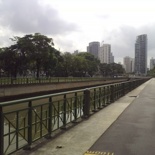
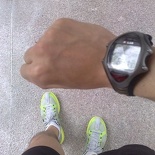
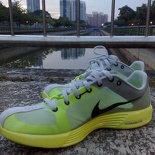
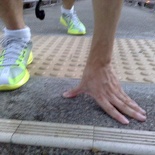
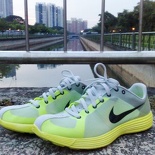
Thank you for this complete review! I’m thinking about buying the Lunarlite Racer, but they don’t have anymore in the shops (in London), so I’ll buy them online. That’s why it is so important the reviews. Really good and quite neutral review, the good and the bad things.
hey I can’t find these shoes in that color… where can i purchase these?